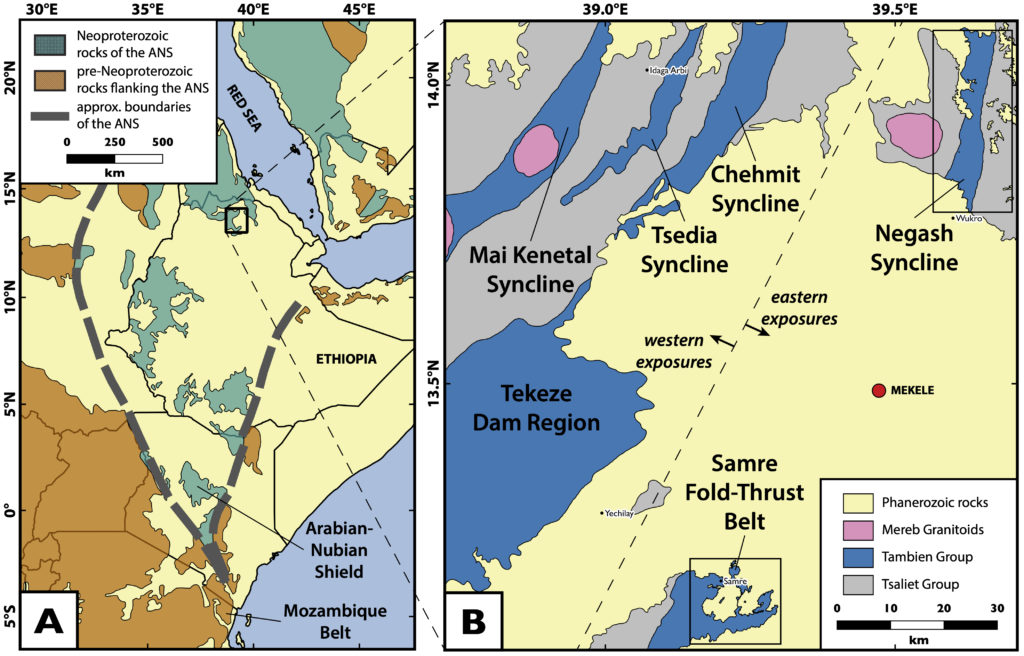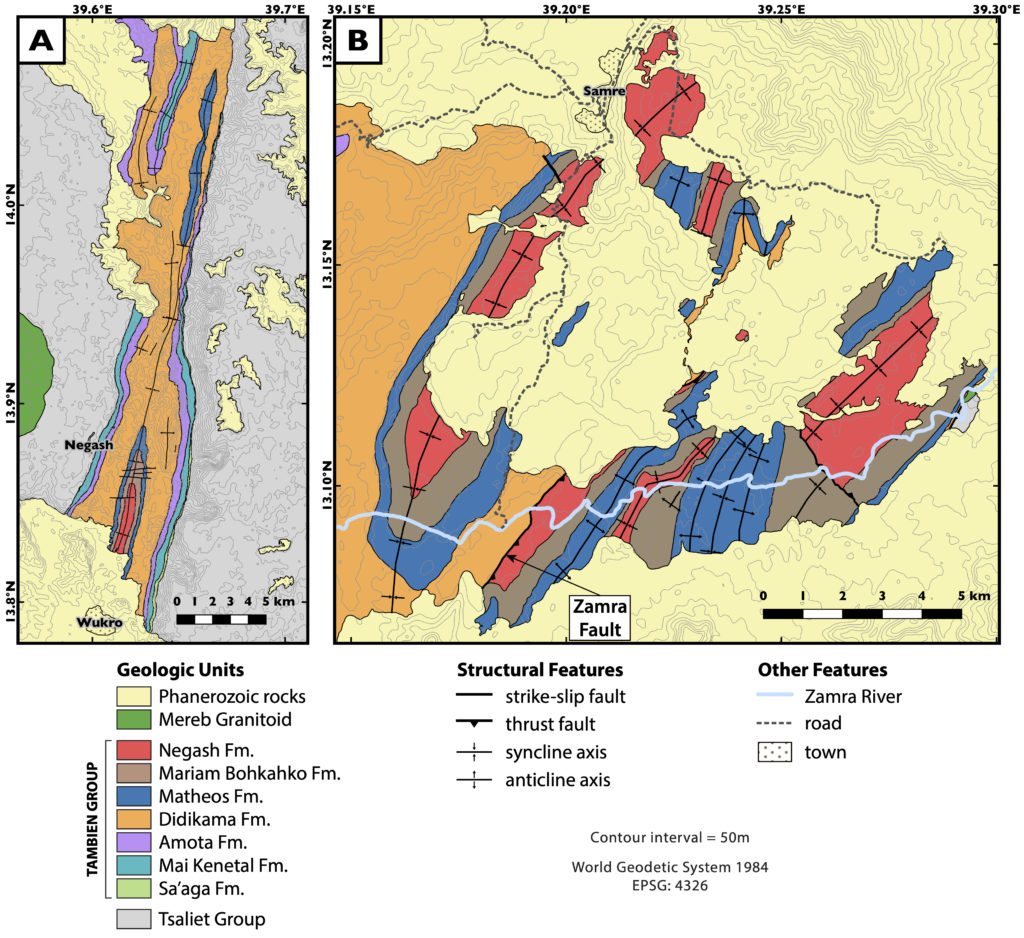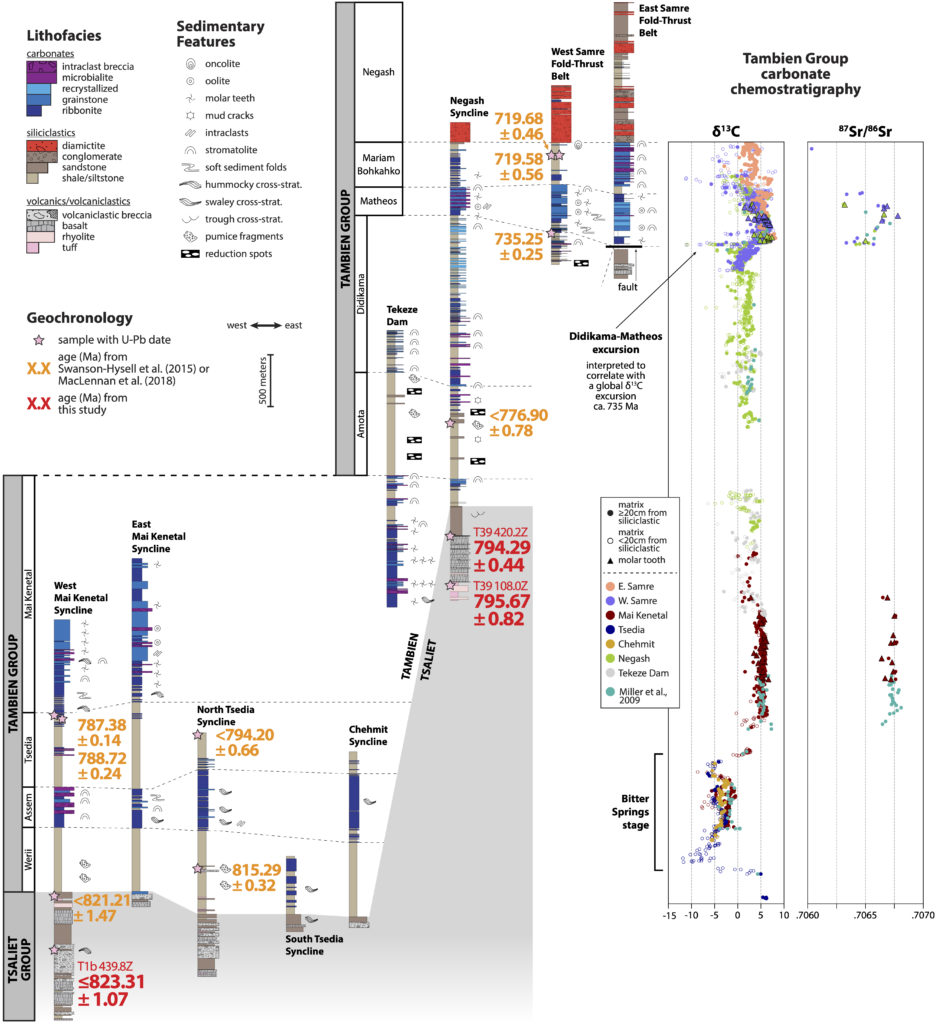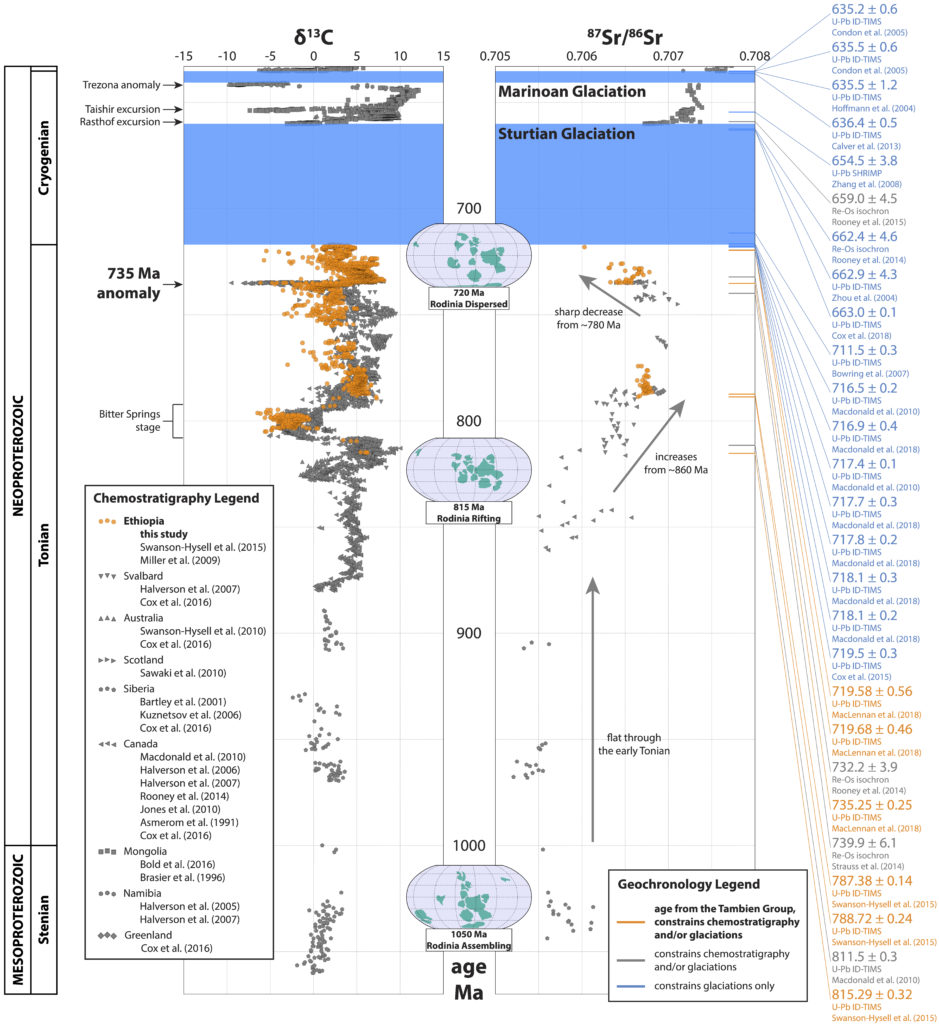Related publications:
- Park, Y., Swanson-Hysell, N. L., MacLennan, S. A., Maloof, A. C., Gebreslassie, M., Tremblay, M. M., Schoene, B., Alene, M., Anttila, E. S. C., Tesema, T., Condon, D. J., Haileab, B., 2020, The lead-up to the Sturtian Snowball Earth: Neoproterozoic chemostratigraphy time-calibrated by the Tambien Group of Ethiopia: GSA Bulletin, vol. 132, pp. 1119-1149, doi:10.1130/B35178.1.
- MacLennan, S. A., Park, Y., Swanson-Hysell, N. L., Maloof,A. C., Schoene, B., Gebreslassie, M., Anttila, E. S. C., Tesema, T., Alene, M., and Haileab, B., 2018, The arc of the Snowball: U-Pb dates constrain the Islay anomaly and the initiation of the Sturtian glaciation: Geology, vol. 46, pp. 539-542, doi:10.1130/G40171.1.
Related code:
Summary:
Life and climate evolved dramatically during the Tonian Period (1000–717 million years ago [Ma]). Sedimentary rocks from this period record the diversification of eukaryotic life, large-scale fluctuations of the carbon cycle, and major changes to the configuration of the continents during the lead-up to a pair of severe global “Snowball Earth” glaciations in the Cryogenian Period (717-635 Ma). Understanding global change leading up to these glaciations is critical for interpreting the boundary conditions that allowed these extreme environmental conditions to occur, especially since no ice sheets are known to have existed for ~1.5 billion years between ~2200 Ma Paleoproterozoic glaciation and the ~717 Ma start of the Cryogenian glaciations.
The Tambien Group of the Tigray region of northern Ethiopia is a sequence of carbonate and siliciclastic sedimentary rocks deposited in an arc-proximal basin that culminates in glacial deposits associated with the first of the Cryogenian glaciations – the Sturtian Snowball Earth. The Tambien Group is an ideal target for studying the evolution of Earth’s surface environment leading into the Sturtian glaciation for three main reasons:
- The stratigraphy contains abundant carbonate strata, which record certain aspects of the chemical composition of the oceans (e.g. carbon and strontium isotopic composition) at the time of precipitation.
- Volcanic ashes are found throughout the stratigraphy, which can be dated at very high precision using U-Pb CA-ID-TIMS on zircon.
- The stratigraphy has no large unconformities, which indicates that this record of the evolution of Earth’s surface environment is relatively complete.
The Tambien Group is the only sedimentary sequence identified so far that brings together these three factors, allowing us to construct the most precisely time-calibrated record of the evolution of Earth’s surface environment leading into the Sturtian glaciation to date.


Most recently, we studied the stratigraphy of the Tambien Group in high detail in the Negash Syncline and the Samre Fold-Thrust Belt (Figs. 1 and 2). While mapping, we made detailed observations of the stratigraphy, and collected carbonate and ash samples for geochemical analyses. We employed a variety of multivariate statistical techniques to assess the quality of the geochemical data, and ultimately produced a precisely time-calibrated marine carbon and strontium isotope record for ~820-717 Ma (Fig. 3).

Our work in the Tambien Group has placed important new constraints on the evolution of the global surface environment leading up to the Sturtian glaciation by refining the timing and trajectory of these isotopic records (Fig. 4). In particular, we find that rapid and large-magnitude perturbations to the carbon cycle (as recorded in the carbon isotopic composition [δ13C] of marine carbonates) are not associated with the Sturtian glaciation. Furthermore, the marine strontium isotope [87Sr/86Sr] record, when assessed in conjunction with an analysis of the timing and paleolatitude of arc accretion events, suggests that enhanced subaerial weathering of arc lithologies accreting in the tropics started cooling the planet tens of millions of years before the start of the Sturtian glaciation, contributing to the initiation of the severe global glaciation.

